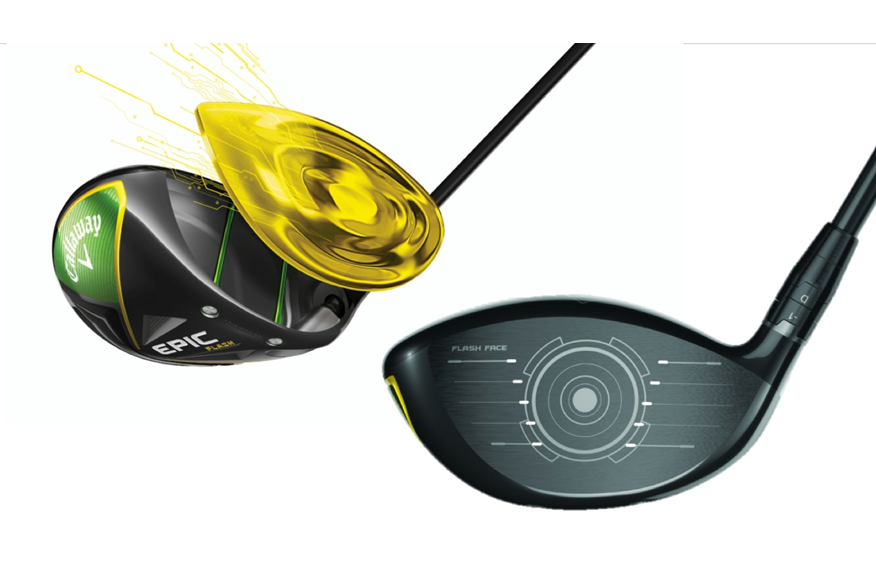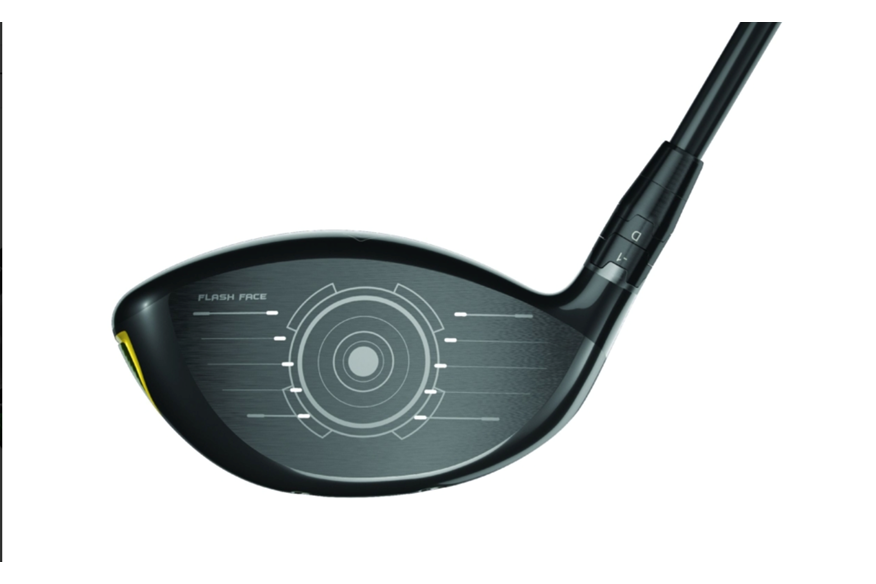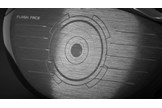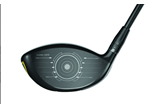What is Flash Face technology? The story behind Callaway’s new AI developed technology
Last updated:
Callaway’s Epic Flash drivers and fairway woods feature their latest ‘Flash Face’ technology, a first in golf equipment production created using Artificial Intellegence, machine learning and a new $5 million super computer
Callaway’s new super computer was programmed with their driver data going back almost two decades, along with the latest R&A rules on springiness and ball speed. It crunched the numbers on millions of designs – using artificial intelligence to learn as it went – and it came up with the hottest driver face it thought possible, within the framework of the rules, to help golfers get both more ball speed and distance.
The computer itself set them back around $5million, and took around four weeks to come up with, running 24-7. According to Callaway, if you were to do the same thing on a 2018 laptop, it would take you 34 years – and even then it’s likely you wouldn’t come up with this.
Reviews
➤ Callaway Epic Flash Driver
➤ Callaway Epic Flash Sub Zero Driver
➤ Callaway Epic Flash Fairway Wood
➤ Callaway Epic Flash Sub Zero Fairway Wood
“Flash Face isn’t something a human would have arrived at any time soon,” said Alan Hocknell, Callaway’s R&D boss. “Without the help of A.I. and machine learning we couldn’t have come up with this design.”
But as Callaway admitted, they wouldn’t have even gone in the direction of Epic Flash if not for the computer: A new driver face design typically takes eight to ten iterations. Through Machine Learning their computers cycled through 15,000 face architecture iterations, learning from each one, before arriving at Flash Face.
“We couldn’t have come up with Flash Face using conventional engineering principles,” said Hocknell.
“Did what it come up with surprise me? It scared the hell out of me to be honest.
“People rightly said ‘you’re the head of R&D, you’re supposed to know how your clubs work’, and I didn’t know how it worked. And the worst part about it was that if it didn’t work, we didn’t know how to modify it to make it work. So when I said the computer went round the loop 15,000 times, we actually did that process about four times, and each time it was on us to refine the rules we were giving the computer, so it came up with an even better solution.”
Callaway reveal new Epic Flash and Epic Flash Sub Zero Drivers and Fairways

How does Epic Flash work?
Flash Face has a unique, internal mapping which consists of dozens of subtle ripples flowing from heel to toe. Though the size, height and configuration of the ripples appears random, they in fact work together cohesively to elevate COR in the face’s centre region.
Once Callaway have created this pattern, it’s flipped around and 100% milled on the other side to control the thickness precision in all areas of the face.
When Callaway are done forging and machining it, they put it through an aging process so it’s held at 595°C for two hours in an oven, and that changes the structure so it’s even stronger and tougher. Then it’s laser-welded into the head.
The result? An average ball speed gain of 3mph among Callaway’s European Tour players in early testing, and as much as 6mph for some – and a shock for Callaway’s R&D team.
What is the difference between Flash Face and other driver faces?
R&D boss Dr Alan Hocknell told TG: “Most of today’s driver faces have some design commonalities – most are thicker in the centre and then thinner near the edges.
“They’ve been made using similar ideas since about 2002, when we first introduced the VFT pattern (Variable Face Thickness). Flash face is not designed like that. It’s clearly different from any of our designs, and from our competitors… or anything that’s gone before.
“The centre of the face is now the thinnest region of the face, not the thickest. It’s completely the reverse of some of the things you’ve seen from us. In a lot of our driver designs of the past we were limited by the rules about the ball speed from the middle, so we focused on ball speed when you don’t hit the centre. This face does that, but also delivers more ball speed from the centre of the face. So you’re best shots just got even better, which is something we haven’t been able to say for a while. You can illustrate the benefits of this driver very clearly because there’s a direct advantage in ball speed.
“We get all our competitors’ drivers, cut them open and take a look, and usually they carry the blueprint of what the design team was thinking – where they chose to put the weight, why it’s stiffer here, that kind of thing. But when you look this, you’d say ‘what on earth is that?’ We’ve had to invent new processes for manufacturing and measurement – there are no easily measure flat surfaces – in addition to all the work to write software, so it’s not at all clear to our competitors what on earth we did to arrive at this. And this face will not work in any other driver.”
What inspired Callaway to explore Artificial Intelligence?
The motivation for what we are doing was to try to see if we could use computer tools to reach beyond our current design thinking and help us go ‘outside the box’.
We have long-been using computers to perform simulations of driver and ball impact and have tended to come up with faces that are primarily thicker in the middle and thinner on the outer edges. This pattern of design follows what engineering expertise would tell you to do, and we could indeed continue to follow this well-trodden path, balancing the performance of the face to the shape of the head.
However, we felt our progress was starting to stagnate, even though we have seen a huge
performance breakthrough in the development of Jailbreak Technology. The challenge we set ourselves was how to break out of this design cycle and test our human-led product development approaches that are, to some extent, getting in the way of future thinking.
Callaway launch three new golf balls: Supersoft, Supersoft Magna & ERC Soft
Where did you begin?
We started by asking ourselves a question: ‘What if we could get ourselves in a position where we created the rules of design, and then let a computer go off and explore what is possible in that design space?’
Over the past 10-15 years we have been using analysis packages that have simulated the collision of the ball on the face. This would tell us details about speed of the ball, the amount of stress on the face, whether the face remained ‘legal’.
We do a lot of this analysis but a person has to study these findings, make some modifications on a computer, and undertake the process again and again to see if we can improve things. On average, we would do this detailed cycle about six times during the design of a driver. But what if we could speed up this process, and go through it not just six times, but many, many more times? Could there be a way to use a computer to learn more about the performance of the face that we as humans could not achieve?
Could it find interactions about where the mass is and where the stiffness is in a more detailed fashion than we could, given the goal of creating extra ball speed, but stay conforming to the Rules of Golf?
In order to do this, we had to create a platform where we could program a computer with these rules and then let it interrogate its own answers, i.e. go from one design iteration to the next, learning and developing as it went, with the sole purpose of creating a clubface that got better and better in terms of ball speed performance.

What does ‘designed by Artificial Intelligence’ actually mean?
The design of Epic Flash, and specifically the Flash Face, started as a theoretical challenge and if it were to work, the numerical optimisation done by a computer could produce a different face. At the beginning we didn’t even know if this project would be a success!
We started to research the field of numerical optimisation and one area in that field is called
‘Machine Learning’, which happens to be one of the branches that forms the greater tree known as Artificial Intelligence.
If we look at the definition of ‘Intelligence’, it is the ability to sense your environment and come up with a course of actions that maximise your chances of achieving a certain goal. The ‘Artificial’ element refers to whether computers can be instructed in ways to behave like that, and that is what machine learning is, using these numerical optimisation tools to try to learn about this design space. Once the computer has done enough learning, it can then plot a course to achieving its maximum goal.
So what did Artificial Intelligence produce?
The computer went through 15,000 iterations…which means that every single iteration was, in fact, the design of a new face in a head. In retrospect, I wish we could have done a better job of ‘peeking in’ when the computer was doing its work! The first 1,000 designs were terrible, simply because the computer was educating itself about what it was trying to achieve, but it was constantly learning at a level that humans would find impossible in that time frame.
How long would it have taken to reach the current Flash Face design if A.I. wasn’t used.
We simply don’t know – maybe never? Even if we (as humans) ran 15k iterations over X number of years, we never would have come up with anything close to this design. So, the honest answer is that it is unlikely that we would have EVER arrived at this design without AI. Key to our AI story (and the powerful indicator of our future in R&D) is that Flash Face Technology isn’t just about going around the same (old) design loop more times by using a fast computer. Instead, we were able to look at the complex relationships between all these variables and come up with VFT designs that wouldn’t have been possible using old techniques.
So, while we can make comparisons between the numbers of “iterations” or estimate the time required using slower computers, we thought it was important to clarify that this isn’t just about time. The story is that using AI allowed us to come up with a solution we would have never arrived at otherwise.
What does this super-computer look like?
It is roughly the size of a domestic refrigerator, and is installed in our data centre at Carlsbad in a highly air-conditioned facility with special shielding and an uninterrupted power supply.
You walk into this room and you feel like you have stepped into a spaceship with bright white lights and fans re-circulating the air. It sits in a special cabinet and features a dozen layers of computer, each wired to one another. A special feature at the top of the computer called a ‘head node’ acts as the master controller for all the traffic that is going into its 500 cores, each with multiple processors. It is basically, a massive calculation engine.
Tell us about the look of the face?
The result of this machine learning is a face design that, on the reverse, is a non-intuitive, rather odd looking pattern that actually looks quite random to the human eye. One of the concerns we had as a design team was that if we manufactured what the computer told us to do and then subsequently tested it and found that it didn’t work, we wouldn’t know how to modify it! Thankfully, the results were incredible.
So where does AI stop and human design start?
We told the computer that its design space was only the face. Design elements like the shape of the head, where the mass was in the head, the presence of Jailbreak Technology, the use of the OptiFit Hosel and the proximity of these technologies to one another, were all fixed before we let the computer loose on the design of the face.
In a future world we could explore how we use AI to design more than just the face by
broadening the design space in which the computer works, but this is hugely complex, we are still learning, and it is definitely further down the road.
Is AI Flash Face technology unique to Callaway?
Yes. This is a very different face technology, something of a breakthrough for Callaway, that give us a huge technical and performance advantage that will be difficult for competitors to replicate.
When we see competitor drivers we will very often buy them and eventually cut them up to see what’s going on inside – our competitors will undoubtedly do the same to ours! Interestingly, if you cut open an Epic Flash Driver it will be difficult to learn much from the face and how it looks and why it performs the way it does. It will not be obvious and doesn’t carry any visual ‘blueprint’ that can be transferred.
Another point of separation is that anyone can go and buy a super-computer and use software packages that are commercially available, but we have actually written much of software ourselves, particularly the elements that undertake the machine learning, and it would take a considerable amount of time to come up with a package that delivers what our Callaway computer can.
When you also consider the cost and time required to manage a project of this scale, there are very few competitor brands that have access to the technical resources that we enjoy.
How does the Flash Face work with Jailbreak?
The face is manufactured in a special way that has never been achieved before and the fact that it is designed to work in harmony with Jailbreak Technology and the two specific heads that make up the Epic Driver range makes it very special.
Compared to our other two drivers that have also featured Jailbreak – the original Epic and
Rogue – we are seeing in Epic Flash a driver that still conforms to the rules of golf, but further extends the ability of the face to flex even more efficiently, whilst Jailbreak retains the head stiffness, generating increased ball speeds and further distance gains compared to our previous products.
How much further can we expect to hit the ball using an Epic Flash Driver?
Early Tour player testing with our team of Staff Professionals has seen ball speed increases of up to 6mph which can equate to greater than a 10-yard distance gain in some cases, assuming all other elements of the swing remain the same. Effectively giving a Tour Pro the opportunity to be a club closer to the green during competitive play is an enormous advantage. We also expect this distance gain trend to be evident when consumers are introduced to the product.
Callaway’s Tour Department have not been this excited since the launch of the first Epic Driver and they are telling us the feedback from players is even more positive, and Epic went on to be a huge global success for us.
Does the performance and wide appeal of Epic Flash not make the technology we are currently enjoying in Rogue Drivers out-dated?
If consumers are inspired by using the best technology Callaway has developed to-date, then Epic Flash represents this. But golfers may still prefer the head shape or general look of the Rogue Driver, or feel the forgiveness of that design suits their game more. Let’s not forget, Rogue is also an incredible family of drivers.
It is also worth highlighting that for the less proficient golfers out there who may struggle with tee shot consistency, our Rogue ‘Draw’ model is still capable of producing more draw bias than the new Epic Flash. This model may still better suit players looking for help in correcting a slice.
Can you see a scenario where AI design completely overtakes traditional product design?
One of the biggest challenges I have set my R&D team is not to get carried away with AI. It is all useless unless the findings from machine learning are not then applied in the real world. There is a lots of work that has to go into validating the work of AI and this is forcing us to upgrade our measurement and test capability and that is completely driven by our R&D team.
Although we have given high priority to AI initiatives, we are not going to stop our other forms of product development; the huge amount of consumer insights we collect, the decisions we make as a team out on the golf course with ‘grass under our feet’; impact sound testing, understanding golfers’ emotional connections with their equipment, the list goes on…
Let’s not also forget that the designs we are creating are hugely challenging to our manufacturing processes and we have a large team focusing on this area to ensure our computer designs can actually be created without them breaking.
The R&D team will probably grow in the future because we are undertaking projects that are so much more challenging and time-consuming than ever before.
Is this a genuine ‘breakthrough’ technology for Callaway?
It’s too early to say whether this type of technique, whether it is in the new Flash Driver, or any other product we create in the future, will set a revolutionary path in the manufacturing of golf equipment. Clearly we have identified a significant process that can give all golfers a genuine performance advantage.
If we can develop this learning into other parts of the driver, or other products, then it truly will be a breakthrough that all golfers are going to enjoy. It is down to us how creative we can be with it, while also staying true to the goals of what people want to achieve with their golf clubs. It has tremendous potential and we are only scratching the surface at the moment.
Why does the Epic Flash Sub Zero have a new sliding weight?
Whilst more accomplished golfers have generally defaulted to our previous Sub Zero model
drivers to adjust spin characteristics of their ball flight, we are also seeing a trend from the bigger hitters who wish to slightly ‘tweak’ the shape of their ball flight very slightly. The inclusion of this left-right weight track allows this to happen more efficiently.
For Tour Players and some of our Advanced Fitting Centres we will also be offering a solution whereby you can also replace the standard sliding weight with heavier or lighter weights, and the same can happen with the front weight screw to very precisely tune ball flight performance and launch spin.
Is the Flash Face in the accompanying Epic Flash Fairwood Woods as effective?
It is a different design to the Driver because it has to perform from both a tee shot and from a grassy lie. Impact positions are traditionally lower on the face in a fairway wood so the design needed to recognise this.
As to why the design of the Epic Flash Fairway face is so different to look at (from the inside) we are not entirely sure, that’s the intriguing thing about AI design! It has a distinct thick ring on the reverse of the face which is absorbing a lot of the impact stress. The design process was similar to the Driver but it is part scary, part remarkable, that we have a face design that works amazingly well in Epic Flash Fairway Woods and we don’t 100% understand it!

